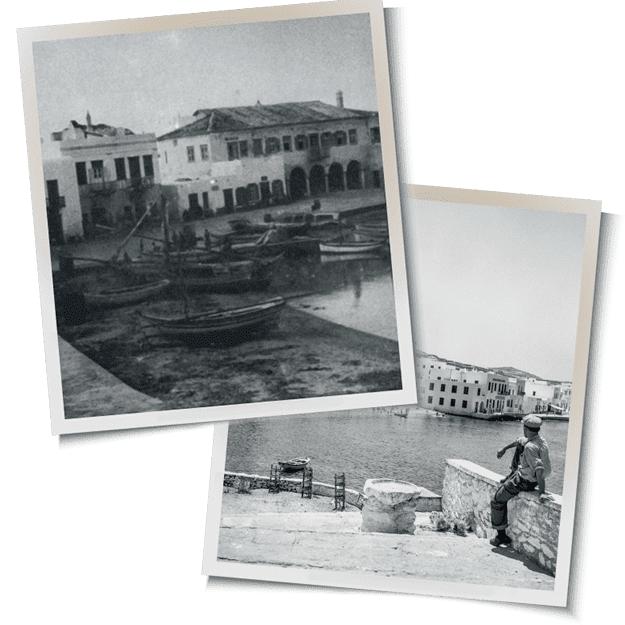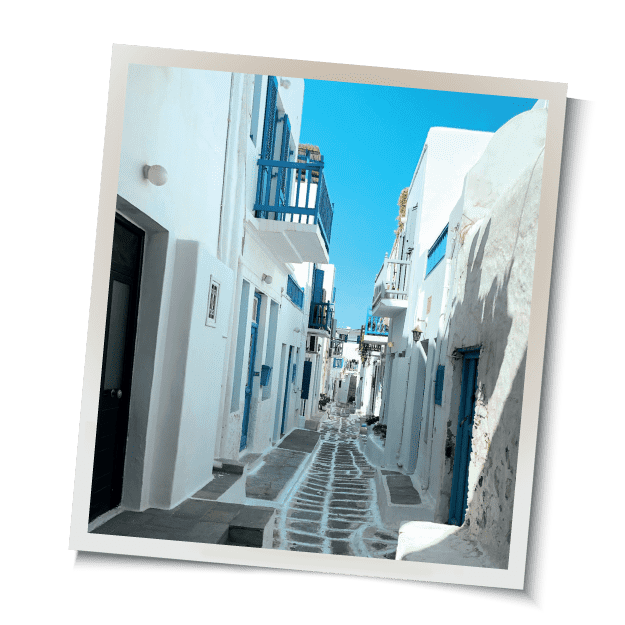s4
History of Mykonos

The island has taken its name from the son of the King of Delos, Mykonos. The history of Mykonos in antiquity appertains to the history of the adjacent archeological island of Delos. According to mythology, Hercules, in one of his twelve tasks, fought the Giants and, after killing them, he threw them into the sea where they petrified and turned into huge rocks, forming the island of Mykonos. Excavations in the ancient site of Ftelia indicated that the first inhabitants of the island were Carians. The ancient Mykonos developed a great culture and, in fact, the earliest amphora of ancient times, known as the ‘’Mykonos Vase’’, was discovered on the island. The Mykonians played an essential role to the Greek 1821 Revolution as they provided a total of 22 warships, 500 sailors, and 140 canons in order to assist the cause. The heroic revolutionary figure of Mykonos is Manto Mavrogenous, a female who financed the Revolution, helped in the organization of fights, participated in the Filiki Eteria (a secret revolutionary organization), and managed to organize troops to revolt against the Turks in 1822. Later on, the island succeeded to reinforce its commercial power and make the economy bloom using textiles/fabric creation - the most important source of income for the families. The textiles were of such high quality that they were traded around Greece and around the world.
Mykonos Town

Mykonos town is called Chora by the locals, is built around a bay and It follows the traditional Cycladic Architecture. It has whitewashed cubic houses with wooden doors, windows, and balconies painted in bright colors, narrow streets forming a labyrinth (for pirate attack protection), beautiful churches, lovely chapels, and purple bougainvilleas contrasting with the bright white of the buildings’ walls. On Matogianni street, you will find numerous restaurants, chic boutiques, souvenir and fine jewellery shops, and other luxury goods. The picturesque town also boasts an excellent gastronomic scene worth exploring. For a delicious lunch or dinner, you can visit the traditional Mykonian tavernas serving plenty of local dishes and other mouthwatering delicacies. A great way to stay connected with the Mykonian culture. Don’t forget to take plenty of photos as Chora is one of the most photographed place on earth. Use #Mykonos on your social.
Olive oil
Olive oil may be for some simply cooking oil, but to the people of Greece, it is much more than that, it’s a way of living. Olive oil in Ancient Greece (6500 years ago) was not only a basic food, but also a symbol of good health and strength, an actual medicine, and a source of magic, inspiring great awe for its powers. Athletes and warriors would rub it all over their bodies because they believed it would give them strength and good luck. Olive oil was widely used in ancient Delos for cosmetic commodities, cultivated predominantly for the creation of perfumes and spiced with exotic herbs. Greeks measure the extra virgin varieties’ acidity from 0,2-0,5 when they buy it for their salads and home use (Greece has appx 135 million trees & Greeks consume about 25lt/ year per capita). Don’t miss the opportunity to taste it locally and buy some fine-quality packaged olive oil and enjoy it with your family and friends.